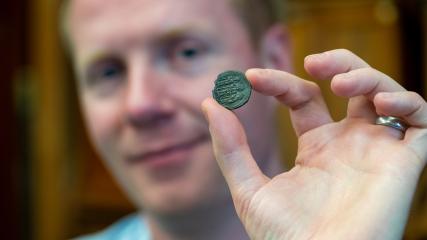Corpus Fellow Professor Rory Naismith helps solve medieval money mystery
Byzantine bullion fuelled Europe’s revolutionary adoption of silver coins in the mid-7th century, only to be overtaken by silver from a mine in Charlemagne’s Francia a century later, new tests reveal. The findings could transform our understanding of Europe’s economic and political development.
Between 660 and 750 AD, Anglo-Saxon England witnessed a profound revival in trade involving a dramatic surge in the use of silver coins, breaking from a reliance on gold. Around 7,000 of these silver ‘pennies’ have been recorded, a huge number, about as many as we have for the rest of the entire Anglo-Saxon period (5th century – 1066).
For decades, experts have puzzled over where the silver in these coins came from. Now a team of researchers from the Universities of Cambridge, Oxford and Vrije Universiteit Amsterdam have solved that mystery by analysing the make-up of coins held by the Fitzwilliam Museum in Cambridge.
Co-author Fellow of Corpus Professor Rory Naismith said, “There has been speculation that the silver came from Melle in France, or from an unknown mine, or that it could have been melted down church silver. But there wasn't any hard evidence to tell us one way or the other, so we set out to find it.” Read the full story and view a video with Rory on the University website.

